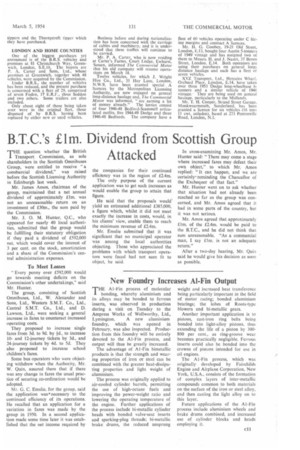New Foundry Increases Al-Fin Output
Page 49

If you've noticed an error in this article please click here to report it so we can fix it.
THE Al-Fin process of molecular bonding, whereby aluminium and its alloys may be bonded to ferrous inserts, was observed in production during a visit on Tuesday to the Ampress Works of Wellworthy, Ltd., Lymington. A new aluminium foundry, which was opened in February, was also inspected. Production from this foundry will be entirely devoted to the Al-Fin process, and output will thus be greatly increased.
The advantage of Al-Fin bimetallic products is that the strength and wearing properties of iron or steel can be combined with the greater heat-dissipating properties and light weight of aluminium.
The process was originally applied to air-cooled cylinder barrels, permitting the use of high-octane fuels and improving the power-weight ratio and lowering the operating temperature of the engine. Further applications of the process include hi-metallic cylinder heads with bonded valve-seat inserts and sparking-plug threads; hi-metallic brake drums, the reduced unsprung weight and increased heat transference being particularly important in the field of motor racing; bonded aluminium bearings; the lobes of Roots-type blowers and bi-metallic gears.
Another important application is to pistons, cast-iron ring belts being bonded into light-alloy pistons, thus extending the life of a piston by 300800 per cent., as ring-groove wear becomes practically negligible. Ferrous inserts could also be bonded into the crowns of pistons intended for use in oil engines.
The Al-Fin process, which was originally developed by Fairchilds Engine and Airplane Corporation, New York, U.S.A., consists of the formation of complex layers of inter-metallic compounds common to both materials on the surface of the iron or steel and then casting the light alloy on to this layer.
Future applications of the Al-Fin process include aluminium wheels and brake drums combined, and increased use of cylinder blocks and heads employing it.




































































































